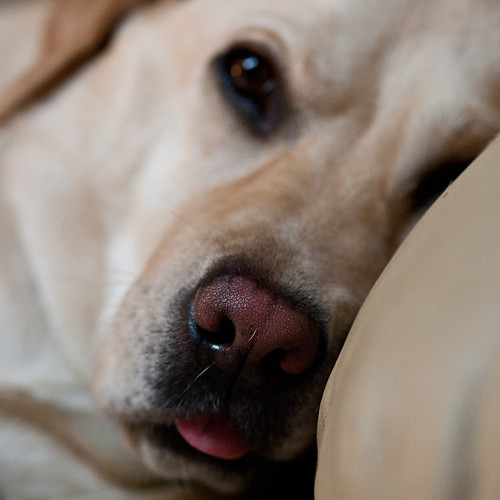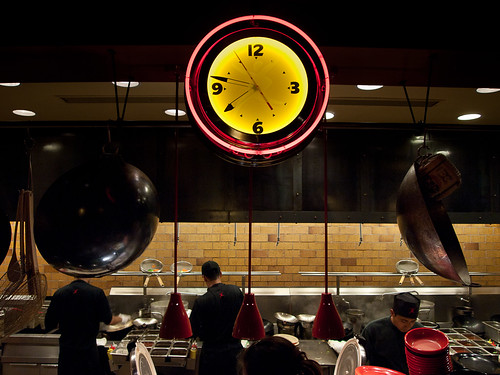That didn't take long
Ruby likes to sleep with the tip of her tongue sticking out. Except in this photo she's just waking up. Looks like she's giving me a raspberry. Raw processed in Lightroom.
Late Thursday night at Pei-Wei. Picked up an order of sesame chicken and brown rice. Processed in Lightroom from raw.
I keep bouncing back and forth between JPEG and raw processing. Every time I pull JPEG out of the camera and then look at it a little closely (not even 100%) I keep seeing speckles and mud-like artifacts in the shadows. If I run the raw through Lightroom I get clean shadows. I might get grain, but I can live with grain. I just can't abide the "mud" that the Olympus JPEG engine produces in the shadows. I'm getting some prints made so I can see if there's any difference between the in-camera produced JPEGs and the Lightroom produced JPEGs. I'm also going to adjust the settings a bit to truly match what the E-P2 produces. I should have done this a while back, but I didn't know any better.
So I guess I will continue to work with RAW, but leave everything else the same in-camera. Maybe change the default settings in Lightroom as well.



Good photos, Bill. And the same here, with what you describe as your new workflow: I'm still shooting both raw & jpg with my E-520, and process the raws with a virtualized Windows7 (only 1.5GB RAM), and running Olympus Viewer 2 in it. So I more or less process "in camera", but later.
ReplyDeleteThe one thing I cannot warm up to is in-camera (or in-OV2) sharpening; for this and for the prevention of clipping highlights or shadows, and also for slight adjustments to curves I additionally fire up Raw Therapee on Linux - after saving the output of OV2 as 16 bit tiff.
Complicated? Naah, not really. Once you get the hang of it, it's a matter of minutes for a couple of photos which are probably worth it. And yes, that also includes "documentary" pictures for my blog.